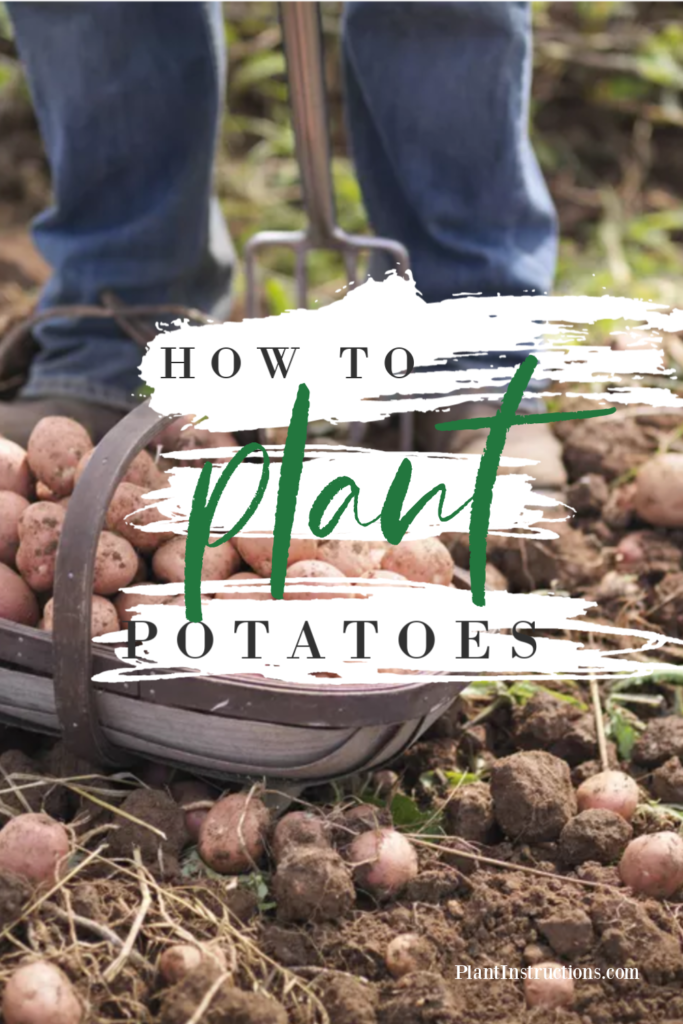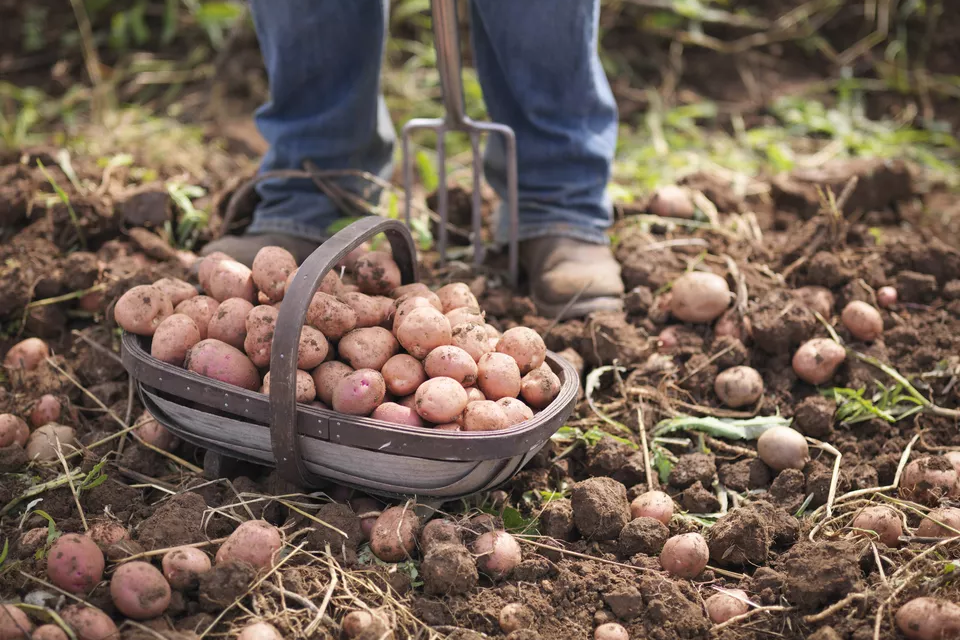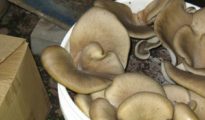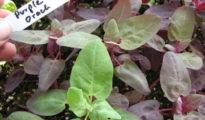Learn how to plant potatoes with this easy to follow gardening guide! Growing and planting potatoes is a lot easier than you'd think!
Potatoes are one of the most consumed vegetables at home, no to mention that potatoes are also the easiest vegetables to plant. Imagine having a tremendous supply of potatoes right in your garden, I know sounds AMAZING! Potatoes are one of those vegetables that give you a tremendous harvest.
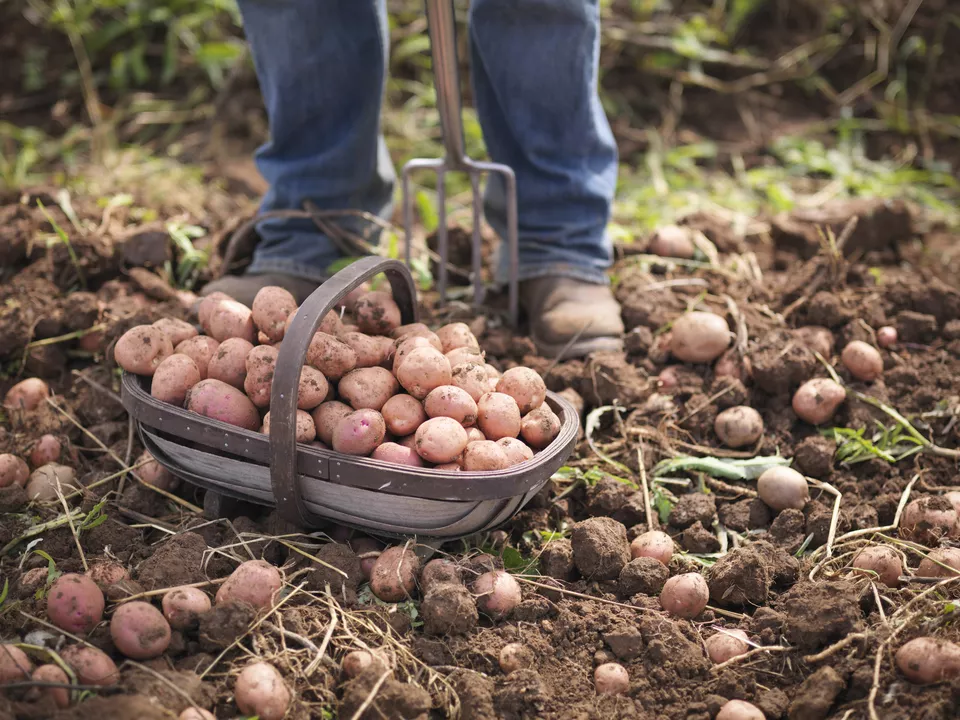
With tons of culinary uses and benefits potatoes makes one of the most necessary food in your diet. Today we will teach you how to plant potatoes with this easy to follow guide.
How to Plant Potatoes
There are tons of potatoes varieties, more than 200 to be exact, but today we will show you how to plant 3 of the most used potatoes varieties at home that even beginner gardeners can plant which are Russet, red and white potatoes.
#1. A Guide to Plant Russet Potatoes
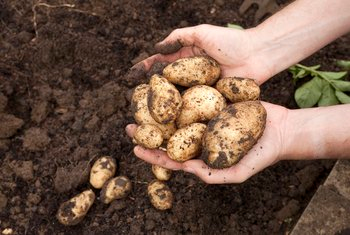
Russet potatoes also known as Idaho potatoes have a large size, mealy flesh, and rough brown skin. They have a pleasant bland flavor making it easy for other flavors to pop out when mixed. This type of potato is most used at home for baking, frying, and mashing. Yum, homemade french fries!!
Soil:
Well draining soil
Water:
Light regular watering or at least once a week
Fertilizer:
Nitrogen-rich fertilizer
Climate:
6-8 hours of direct sunlight, and cool (but not freezing) weather.
Planting Russet Potatoes:
- Start planting your russet potato seeds 21 days before your last expected spring frost.
- Get seed potatoes from your local nursery or online. Make sure the potato seeds are certified.
- Potato seeds are no more than pieces of a whole potato that have at least 2 eyes per piece.
- Cut the potato seeds into pieces of 2-4 ounces, making sure that each piece has at least one eye.
- Store the cut pieces in a place with room temperature, humid and dark for at least 2-3 days.
- Prepare your planting area by breaking up any hard soil and keep your rows 3 feet apart.
- Make sure the soil is well-draining, loose with plenty of organic matter.
- Apply nitrogen-rich fertilizer to the soil, then water the soil and apply organic mulch.
- Plant each piece 3 inches deep with the sprouts pointing up. Space them about 12 inches apart and covert each potato piece with soil.
- Once the potato plants start emerging add 3 more inches of soil.
- Then apply a layer of organic mulch to prevent weeds and maintain soil temperatures.
- Water once or twice a week.
- Harvest once the plant’s foliage has turned yellow or has died back. Allow them to dry a few days before digging.
- Dig potatoes on a dry day and store them in a cool, dry place.
#2. A Guide to Plant Red Potatoes
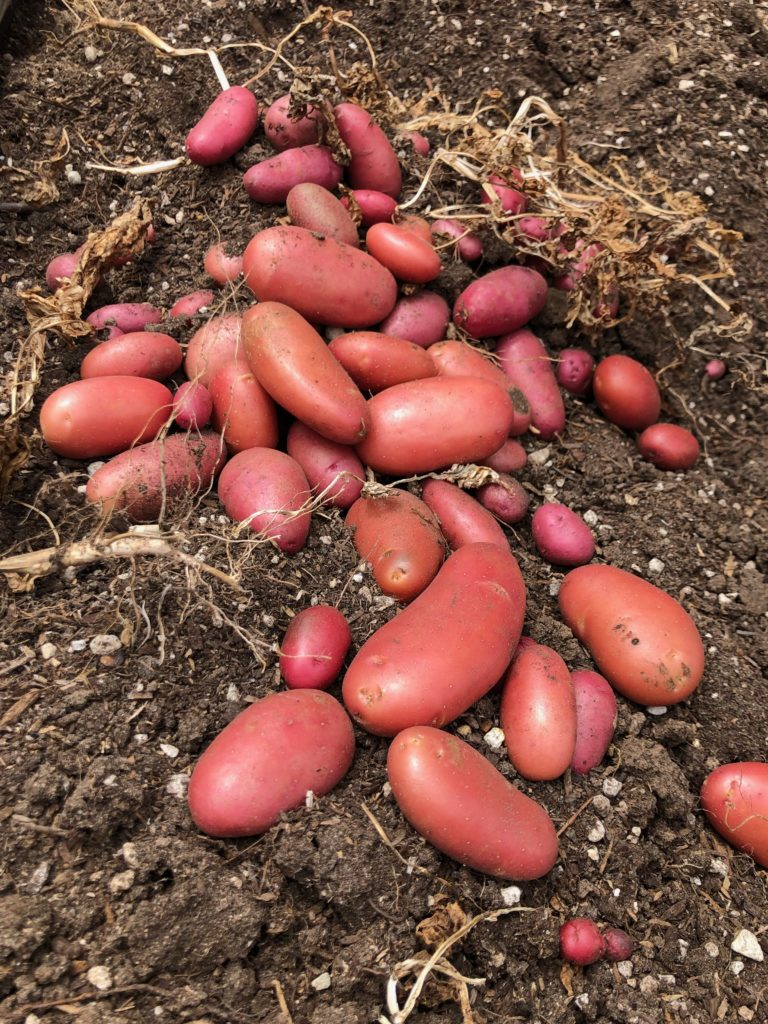
These potatoes are a great source of vitamin C and potassium. They are low in starch, high in moisture with a small, round, and red skin appearance. The flesh is waxy and white. Red potatoes are most used at home in soups, stews, boiled or crispy roasted. Have you seen those delicious small potatoes in a seafood broil? Well, those are red potatoes!
Soil:
Well draining soil
Water:
Deeply watering 1-2 times a week
Fertilizer:
Compost or manure
Planting Red Potatoes:
- Prepare your planting area by working 3 feet of compost or manure into the soil.
- Choose an area in your garden with sandy soil and a 6.0 or 6.5 pH.
- Cut the potatoes into 1-2 ounce pieces with at least one or two eyes each.
- Plant the seed potato pieces 3-5 inches in deep rounds with the pointing side up.
- Space them 12 inches apart, each row two feet apart and cover the tubers with 4-6 inches of soil or compost.
- Water the newly planted potatoes deeply making sure the soil is moist but not soaked.
- After, water 1-2 times a week.
- Harvest your red potatoes about 100 days after planting using a shovel and making sure you don't damage it in the process.
- Wash your potatoes well and store them in a cool and dark place.
#3. A Guide to Plant White Potatoes
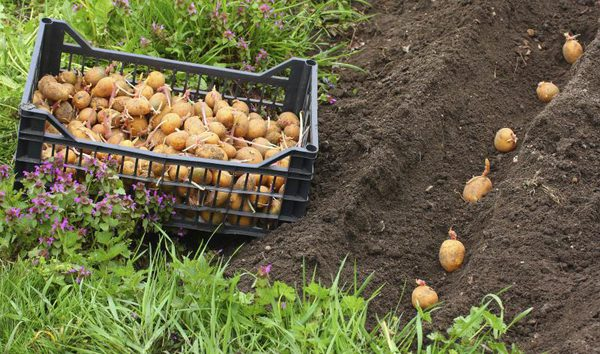
These are commonly known as all-purpose potatoes. White potatoes have less starch than russet potatoes with a dense and creamy taste. This kind of potato has a waxy texture with yellow or white flesh and golden skin. White potatoes are most used at home sauteed, steamed, boiled or roasted.
Soil:
Well draining soil
Water:
Every 3 days
Fertilizer:
5-10-10 fertilizer
Planting White Potatoes:
- Prepare your planting area by spreading a 4-inch layer of compost.
- Dig a trench 4-6 inches deep and add a 5-10-10 fertilizer.
- Place the potato pieces in the trench and space them 12-18 inches apart.
- Cover the seed potatoes with at least 2 inches of soil.
- Right after planting, water the potatoes and then continue watering every 3 days. Keep the soil moist and don't let it dry out.
- Keep the potatoes covered by adding soil or mulch as the tubers grow.
- Harvest once the plant’s foliage has turned yellow or one month after planting.
- Store the white potatoes in a dark and cool place.
Potato Health Benefits:
Potatoes are not only a delicious vegetable but they also have plenty of health benefits! They almost have no fat which makes them easy to digest, high in minerals and antioxidants.
Potatoes are high in vitamin B6, a vitamin that helps the body make amino acids that is needed to make proteins; this vitamin is an important component of red blood cells.
Rich in vitamin C, potatoes make a great vegetable that helps prevent cellular damage. Vitamin C also acts as an antioxidant and helps with collagen production.
Potatoes contains more potassium then a banana, crazy isn't it? Potassium plays an important role when it comes to lower blood pressure.
Potatoes also make an excellent source of fiber and iron helping with weight loss and lower blood cholesterol.
With these easy to follow guides, you should be able to enjoy the amazing health benefits of potatoes in no time!
Looking for more vegetable planting guides? Check out our vegetable section and browse through hundreds of planting how-tos and easy to follow guides!
¿Like this post? Pin, share and comment below 🙂
